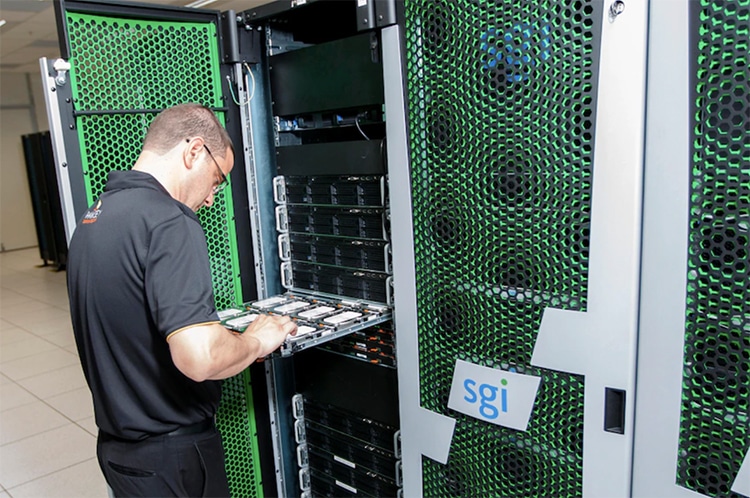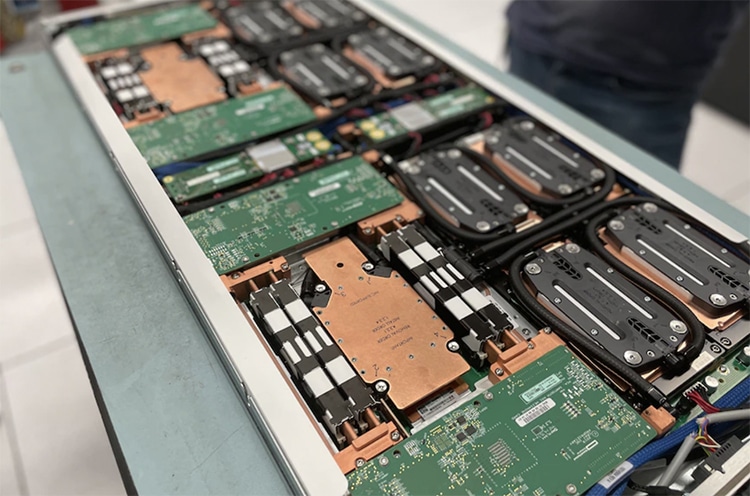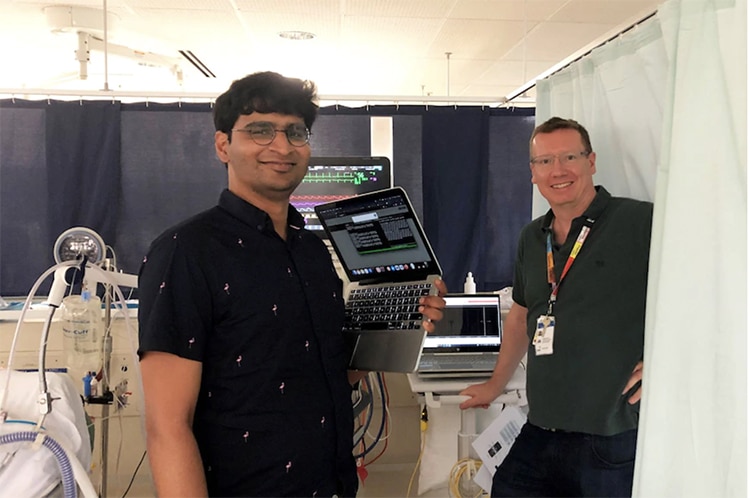
The Setonix supercomputer. (Photo: Pawsey Supercomputing Research Centre)
A patient in the intensive care unit (ICU) can deteriorate quickly. Doctors may have little to no warning before machines ping, panic sets in, and a patient faces irreparable damage or death from a brain bleed. Many times these crises have been impossible to predict. Data researchers have now combined efforts with the Pawsey Supercomputing Research Centre in Australia to create a supercomputer which can run an algorithm that predicts—in real-time—impending dangers to patients. This revolutionary system has the potential to give doctors and staff as much as a 20-minute warning to avert disaster.
Shiv Meka, Royal Perth Hospital’s head of data science, began creating the algorithm by collecting 40,000 hours of patient data from 200 patients at Royal Perth Hospital, Alfred Hospital, and Royal Melbourne Hospital. They tried 20 different models to find the predictive accuracy required. Trained on the data set collected by Meka, the final algorithm can take into account many streams of data coming from a patient to trigger an alert if necessary. The alert allows doctors to decide what care a patient might need to prevent a crisis.
This data use is made possible by a partnership with the Pawsey Supercomputing Research Centre. Their Setonix supercomputer is considered the 15th most powerful supercomputer in the world. The high volume and speed of the data input are largely unprecedented in computing, but it was a natural fit for these computers, which have been used across the realms of science.
The algorithm will hopefully help avoid bad outcomes for many of the 2,000 patients in Australia suffering from traumatic brain injuries in ICUs across Australia annually. “We do amazing science at the level of the universe with astronomers using advanced telescopes, developing insights into our universe — but this is right down to human scale,” says Pawsey Supercomputing Research Centre executive director Mark Stickells. “Increasingly, medical science has been informed by advances in computing, machine learning and artificial intelligence.”
Combining big data and supercomputing, a hospital in Australia has created a predictive method to intervene before patients experience traumatic sudden brain bleeds.

A motherboard in the supercomputer. (Photo: Pawsey Supercomputing Research Centre)
The algorithm should alert doctors about 20 minutes before a crisis so that they can intervene.

The researchers Shiv Meka and Robert McNamara are trying to improve patient outcomes with computers and algorithms. (Photo: Pawsey Supercomputing Research Centre)
h/t: [ABC Australia]
Related Articles:
Surgeons Use Virtual Reality To Separate 3-Year-Old Conjoined Twins With Fused Brains
Counselors Are Urged To Take the Death of Their Clients’ Pets More Seriously
New Zealand Passes Law That Bans Cigarettes for Future Generations
ALS Ice Bucket Challenge Helped Fund a New Drug for Treatment
